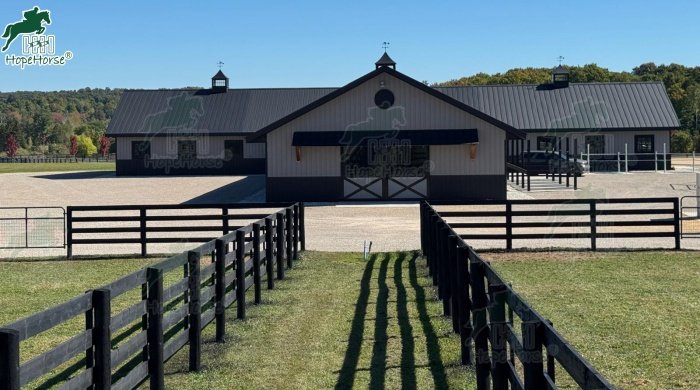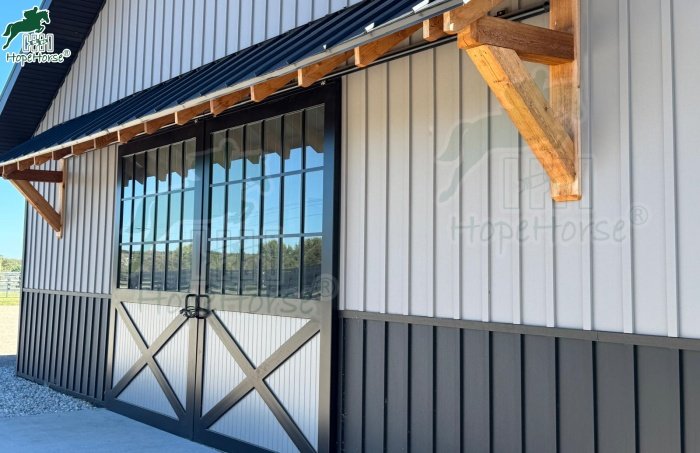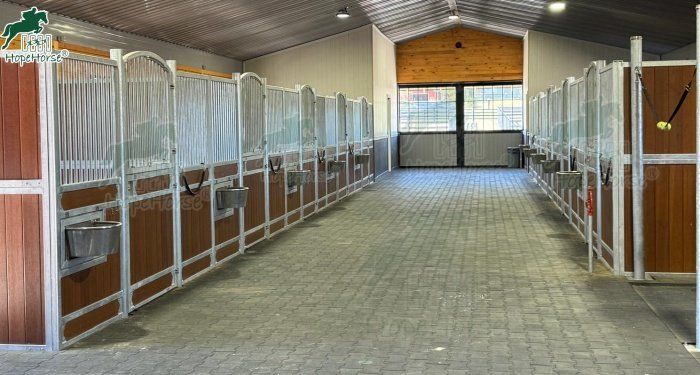The Real Deal: Costs & Key Considerations for Caring for Your Horse
If you’re an equine lover, you know this to be true: horses don’t just “add” to your life—they enrich it. From the physical joy of riding to the emotional bond you build, owning a horse feels like a priceless investment. But here’s the big question every horse owner grapples with: Should you care for your horse at home, or board them at a stable? If you’re stuck weighing the pros and cons, let’s break down the essentials—costs, care routines, and everything in between—to help you decide.

First Things First: The Bare Necessities (and Their Price Tags)
Let’s start with the elephant in the barn: how much does a horse actually cost to care for? According to finance site Money Crashers, you’re looking at a monthly tab of $200 to $325—that’s an average of $3,876 per year. But where does that money go? Here’s the breakdown:
Grain, hay, and pasture (the biggest chunk of the budget)
Salt/mineral supplements
Farrier visits (for hoof care)
Vet bills (check-ups, emergencies, and vaccinations)
Utilities (for barn upkeep)
Tack, supplies, and bedding
Horse insurance
Riding lessons (if you’re learning or training)
Truck and trailer (for transport, if you need it)
And then there’s boarding—where costs can skyrocket depending on your location. Outside Portland, for example, boarding might run you $600 a month. Head to a wealthy area of New York? That number can jump to $1,300 per horse, per month.
Housing your horse on your property might seem cheaper upfront, but it comes with heavy physical and financial work (think daily feeding, cleaning, and maintenance). Before you bring a horse home, map out a budget that includes all these costs. Want to save a little? Shop for high-quality but affordable hay, or learn to trim your horse’s hooves yourself (just make sure you’re trained first!).
How Much Should Your Horse Eat? Spoiler: It’s All About Roughage
Every horse is unique, but one rule stays the same: a horse’s calories should come mostly from roughage—good hay or fresh pasture. Here’s a general guide:
Most horses need about 1% of their body weight in hay or pasture each day.
A horse that eats mostly hay will chow down 15–20 pounds daily.
A 1,000-pound horse fed hay and grain? Plan for 20–25 pounds of food per day.
If your horse has nonstop access to quality pasture, they might eat up to 25 pounds of grass daily.
Grass is ideal (it’s what horses would eat in the wild!), but hay is a fantastic alternative—just make sure it’s the right type for your horse (e.g., timothy for adult horses, alfalfa for younger or more active ones).

Exercise: Horses Need to Move—Every Day
Horses are natural grazers and wanderers—they weren’t meant to stand still! Here’s how to keep them active:
If your horse has access to a paddock or pasture all day (free to roam and nibble), they’ll still need 15–20 minutes of focused exercise daily.
Horses kept in stables? They need at least 30 minutes of daily activity—no exceptions.
Your horse’s exercise routine should match their “job,” too. If you use them for trail riding, mix in speed intervals to build their strength and stamina. The most important thing? Be consistent. Skipping workouts and then jumping back into a full routine can lead to injuries—always warm them up first!
Grooming: More Than Just a Shiny Coat
Grooming isn’t just about making your horse look good—it’s about keeping them healthy. Daily grooming helps you spot cuts, irritations, or sore spots, and it builds trust between you and your horse. Even if you don’t ride that day, stick to a schedule—your horse will thank you.
First, Gather Your Tools
Keep these items in a bucket (easy to grab, safe to store):
Curry comb or grooming mitt
Stiff-bristled body brush
Mane and tail comb
Soft-bristled finishing brush
Hoof pick
Clean sponge or cloth
Extras (if you want): Grooming spray, hoof ointment, small scissors
Step-by-Step Grooming Routine
Start with the hooves. Check for cracks, dirt, or debris—use the hoof pick to clean them out. This prevents discomfort (and ensures you can ride if you want to!).
Curry comb time. Brush from the neck to the rear—this removes dirt and boosts circulation, which brings out natural oils in their coat (hello, shine!).
Stiff body brush. Repeat the neck-to-rear motion with a quick flick—this gets rid of loose hair and leftover dirt.
Finishing brush. Use long strokes (again, neck to rear) to wipe away dust. You can even use this on their face (be gentle!).
Mane and tail. Comb small sections from the bottom up (to avoid tangles) until you can brush from top to bottom smoothly.
Boarding a Horse: Partial vs. Full—What’s the Difference?
If you don’t have space to keep a horse at home, boarding is a great option—but it’s not one-size-fits-all. Let’s compare the two main choices:
Partial Boarding
What it is: You pay a portion of the board to use the horse for a set number of hours/week (at specific times).
Important note: You won’t own the horse—this is more like “sharing” a horse.
Costs: Cheaper than full boarding, but you may still cover vet or farrier fees (check your contract!).
Trade-off: Limited access to the horse—you can’t just drop by anytime.
Full Boarding
What it is: You pay more, but you get unlimited access to your horse—and the stable handles grooming, feeding, and basic care.
Costs: Can be pricey (especially in urban areas). Factors like lessons, arena use, or equipment access will bump up the cost (expect over $700/month in busy areas).
Trade-off: It’s easy, but don’t get complacent! Even if the stable says they’re providing top care, check on your horse frequently to make sure they’re happy and healthy.
Pro Tip for Boarding on a Budget
Some stables offer deals: You might find “dollar-a-day” boarding in rural areas, or you can trade labor (like mucking stalls or feeding) for a discount on board.

Housing Your Horse at Home: How Much Land Do You Need?
If you’re ready to take on full-time care, the first question is: how much land do you need? It depends on your horse’s size, how many horses you have, and how well you manage the pasture. With great management (rotating pastures to prevent overgrazing), one acre can work—but two acres is the sweet spot for most horses.
Costs of Home Housing
If you already have a barn: Make sure it’s in good shape! The minimum size for a stable box is 10’x10’ to 12’x12’—but skip that for draft breeds or pregnant mares (they need more space).
Monthly expenses: Hay, feed supplements, bedding, manure removal, barn utilities, and (if you’re paying a mortgage on the land) your monthly loan payment. Total? $300–$400 per month, on average.
Final Thought
Owning a horse is one of the most rewarding experiences—but it’s also a big commitment. By planning for costs, sticking to care routines, and choosing the right housing option (boarding or home), you’ll set yourself and your horse up for a happy, healthy life together. After all, your equine friend deserves the best—and with a little preparation, you can give it to them.
Short FAQ:
Q: How much does monthly horse care cost on average?
A: Between $200–$325, or $300–$400 if housing at home. Boarding can add $600–$1,300/month.
Q: How much hay/grain does a 1,000-lb horse eat daily?
A: 20–25 pounds total (hay + grain); hay-only diets need 15–20 pounds.
Q: How long should I exercise a stabled horse daily?
A: At least 30 minutes—more if it’s used for activities like trail riding.
Q: Do I need to groom my horse even if I don’t ride it?A:
Yes—daily grooming keeps their coat healthy and helps spot injuries.
Q: What’s the difference between partial and full boarding?
A: Partial = cheaper, limited access, no ownership; Full = unlimited access, more cost, includes care.

